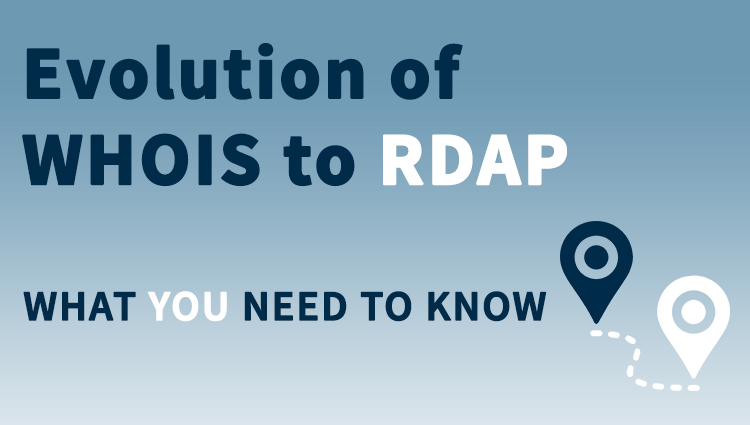The WHOIS protocol, or Port 43, has been the standard to access domain name registration data for more than 35 years. For most of ICANN's existence, the community has discussed issues related to registration data (or in ICANN-speak, Registration Data Directory Services, or RDDS) and over time identified limitations with the existing technology. These limitations include:
- No standardized format.
- Lack of support for internationalization.
- Inability to authenticate users.
- Lookup-only abilities and no search support.
- Lack of standardized redirection or reference.
- No standardized way of knowing what server to query.
- Inability to authenticate the server or encrypt data between the server and client.
The Registration Data Access Protocol, known as RDAP, was created by the technical community in the Internet Engineering Task Force (IETF) as an eventual replacement for the WHOIS protocol. RDAP enables users to access current registration data and was designed to help address the limitations of the WHOIS protocol. As we shared in February 2019, the ICANN organization took another important step in a multi-phased approach to transition WHOIS services to RDAP by mandating that all generic top-level domain (gTLD) registries and ICANN-accredited registrars provide RDDS over RDAP in addition to WHOIS by 26 August 2019. We are now well underway with the first step of registrars and registry operators executing the technical implementation of RDAP.
The next step is to amend the current Registry Agreement (RA) and Registrar Accreditation Agreement (RAA) to incorporate contractual requirements comparable to the WHOIS services for RDAP, such as Service Level Agreements, or SLAs. We have initiated negotiations with the gTLD Registries Stakeholder Group and the Registrars Stakeholder Group to begin this process and to define a coordinated transition from the WHOIS protocol to RDAP. ICANN will continue to communicate progress on the amendments and the transition from WHOIS to RDAP, including the plans to raise global awareness of what's changing with the introduction of RDAP, in the coming months.
Port 43 WHOIS protocol users can learn more about RDAP at ICANN66 in Montréal, Canada. Remote participation is available for those who cannot attend in person. Additional resources and information about RDAP can be found at the RDAP webpage.
We look forward to taking these next steps and want to thank the members of the contracted parties community for their participation, support, and contributions during this transition.


